The life of St. John (1690-1730), celebrated May 27
“But I tell you of a truth, there be some standing here, which shall not taste of death, till they see the kingdom of God.” (Luke 9:27)
One of the most popular saints among Greeks today is St. John the Russian whose incorrupt relics are the boast of the island of Euboia. The multitudes who visit his shrine are such that there is daily bus service to the shrine from Athens. Countless miracles flow from his relics and icons, and even now-when the spirit of the world is having such an oppressive effect on traditional Greek piety–icons of the Saint are often found in buses and in nearly all Orthodox homes. St. John was neither a celebrated hierarch, nor an eloquent theologian, but a simple young man who spent the better part of his life in a stable.
St. John was born in the south of Russia of pious Orthodox parents. He was still young when, in 1711, he took part in the battle against the Turks. Sharing the unhappy fate of many other Russian soldiers, the Saint was captured and sold as a slave to a Turkish cavalry commander from the village of Procopion near Caesarea in Asia Minor. Fanatic in their Moslem beliefs, the Turks inflicted cruel tortures upon their Christian slaves in trying to force them to renounce their faith. While some succumbed to this form of persuasion, many preferred to suffer death and a whole multitude of martyrs was thus added to the heavenly choir. In their misguided zeal the Turks would also kidnap the sons of Christians and raise them as fanatical Moslem soldiers. Procopion was the army-camp of these Christian-hating Janissaries and the new slave of the Turkish Agha became a target of their derisions. But neither their insults nor the beatings of his Turkish master were able to shake the faith of the pious Russian youth who confessed outright that he would sooner die than lose what he treasured above all–the holy Orthodox faith.
.jpg)
The blessed John was assigned to work in the stable where he was also told to sleep. Recalling the lowly Bethlehem cave and The manger where the Saviour of the world first lay His head, the Saint rejoiced in his rude dwelling place. In his humility he regarded his dark corner of the stable as a little paradise where he could freely offer prayer and praise to the true God. The unshakable firmness of his faith, his patience, fortitude, and gentleness of spirit, gradually won the hearts of the Agha and his wife who offered the meek stable boy to sleep in a small room near the hayloft. John, however, preferred to remain in the stable where he could toil more assiduously in the ascetic life, bringing his body into subjection to the spirit according to the Apostle’s command. He ate very sparingly and spent long hours in prayer with the Psalms of David continually on his lips. Weekly he prepared himself to partake of the Most Holy Mysteries in a nearby church, for he knew that without the strength of Christ he was powerless to persevere on the path of the true Faith. At night he would secretly go and keep vigil in the narthex of the church. The Lord rewarded the labors of His faithful servant and through him bestowed blessings also upon his Turkish master who became one of the wealthy and powerful men of Procopion. The Agha understood the cause of his new prosperity and did not shrink from telling it to his fellow citizens.
Once the Agha undertook a pilgrimage to Mecca, the city most sacred to the Moslems. While he was away, his wife invited friends and relatives to pray for the Agha’s safe return from such an arduous journey. As they were getting ready to eat. the mistress turned to John, who was serving at the table, and said, “How much pleasure your master would have, Gavan, if he were here now and ate this pilaff with us!” The pilaff, a common grain dish of the Middle East, was a favorite with the Agha. Wishing the best for his master and firmly believing in the almighty power of God, John asked for a plate full of pilaff from his mistress, saying that he would send it to his master in Mecca. The guests laughed but the mistress asked the cook to comply with the youth’s request, thinking that he would take it to some poor Christian family as was his custom.
.jpg)
Those who are familiar with the Gospel should not be astonished at what happened next, for did the Lord not say that faith as small as a mustard seed is enough to move mountains? Strong in his faith, the blessed one returned with the plate of pilaff to the stable and, as he was petitioning the Lord, in answer to his firm entreaty, the plate disappeared. What was the amazement of the entire household when the Agha finally returned from Mecca bringing with him the copper plate which had held the food. He had been equally astonished to discover the steaming plate of pilaff upon his return from the Mosque to the locked room where he was staying. Still greater was his confusion when he realized that the copper plate was engraved with his initials–just as all the vessels in his house. “For the sake of Allah, I cannot understand how it came even unto Mecca and who brought it!” When his wife told him of John’s request, they recognized the strange occurrence to be a miracle of God, and henceforth all considered John as a righteous man who had found favor with God.
Once again the Agha and his wife tried to persuade the blessed one to change his dwelling place, but the Saint preferred to remain among the animals, willingly fulfilling his duties and continuing steadfast in his ascetic struggles.
He persevered in this manner of life until, after a few years, he became ill. Foreseeing his end, he called for a priest and asked to partake of the Holy Mysteries. Fearing the fanaticism of the Turks, the priest did not want to bring the Holy Mysteries openly to the stable, but receiving wisdom from above, he thought to hollow out an apple; lining the cavity with beeswax, he placed the Holy Mysteries inside and was thus able to safely bring Communion to the Saint. Upon receiving the immaculate Body and Blood of the Lord, the blessed one surrendered his holy soul into the hands of God Whom he loved so much. He reposed on the 27 of May, 1730, having spent some forty years in this temporal vale of sin and sorrow.
The Saint was given a Christian burial by order of the Agha who, as a token of his love and great respect for the Saint, gave an expensive cloth to cover his relics. Three years later a light appeared over the tomb which was seen by many. At the same time, the Saint appeared in a dream to his father confessor revealing that it was the will of God that his relics be exhumed, for his body was incorrupt. Until 1924 the relics were kept in the church of St. George there in Procopion. When, however, the exchange of population took place between Greece and Turkey, and many of the Christian inhabitants of Procopion were resettled on the island of Euboia, the relics of their beloved St. John were also moved and were received with great acclaim and veneration by the Greeks who built a majestic temple in his honor there in the village of New Procopion. To this day, streams of pious Greek pilgrims make their way to this village on the island of Euboia, where the Saint answers the faith of their earnest petitions with his strong and quick intercession before the throne of God.
(Based on a Life by Photios Kontoglou. The Orthodox Word, June-July, 1967)
From the MIRACLES OF SAINT JOHN
The Saint performed many wonders even after his blessed repose. A descendent of the Agha told many of the following miracle: “My children would not live except for a short time, and would die while yet infants. Their unfortunate mother, after she had lost hope in the wisdom of medicine, fled without my knowledge to the relics of the slave John, so that be might grant her a little child which would not die while yet young, so that we also might rejoice to see it as a young man or even a young girl …. In truth the righteous John heard the supplication of my wife. God granted us a strong little boy whom we called, as you know, Kole Guvan Oglu (that is, “Son of the Slave John”), and he lives through the power of God and the prayers of John even until today.”
Several times St. John has appeared in dreams and visions warning of impending dangers. Once he warned some Greek school children that the roof was about to fall; they had time enough to jump underneath their desks and when the roof fell, its beams came down upon the desks without striking even one of the children.
More recently we have heard about the miraculous healings of two severe cases of meningitis – one a 19 year old shepherd boy in southern Greece and the other a 3-year old boy in London.
Today a part of the right hand of St. John is enshrined in a special silver reliquary in the Holy Transfiguration Monastery, Boston, where many people come to venerate it and to ask the prayers of this simple Confessor of the Christian faith, knowing that the Lord – Who resisteth the proud – hears speedily the prayers of the meek.
In St. Savas Hospital for Cancer
In the big Athenian hospital of Saint Savas, a mother had been battling against the scourge of mankind – cancer – but in her case the illness proved invincible and the doctors told her children to take their mother home,
“Do not tire yourselves anymore by coming to the hospital to look after your mother!”, they told them, (The family was from the town of Kavala in northern Greece,) “There is no hope of her living, Take her home, for if she dies here you will have the bother of dealing with the hospital procedures and regulations,”
Her five children, who were gathered around their mother’s bed, began to weep on hearing the doctors’ final announcement. They wept, for it was their mother – the root of life – who was dying, and we all have only one mother in this life.
At that moment an unknown lady was passing the door of the hospital room where they were gathered, She saw the tragic scene and understood what was happening, “Is this your mother?” she asked the children, “Listen to me, do not go on like this. Above science and doctors there is God and His saints. Whatever was humanly possible you did. Recently, I went on a pilgrimage to the shrine of Saint John the Russian at Prokopi, in Euboea, where his holy body is preserved entire, and I took a little oil from the oil-lamp hanging over the Saint’s relic with which to make the sign of the cross over someone whom I have ill here in this hospital, I will do the same for your mother, and God will provide,”
(How true it is that a few words, a little compassion, a little support, can greatly comfort and help one’s fellow man who is in distress or who is grieving. Even to sit silently next to someone who is suffering, gives them courage.)
With a piece of cotton-wool, the unknown lady made the sign of the cross on the forehead of the sick woman, and left.
II is true that divine energy can be transferred not only directly but also through articles and substances used in worship, such as relics, and holy water and oil, for the Church has absolute belief In the therapeutic power of Christ. This humble way of transmitting the unsubstantial and uncreated energy of God to our bodies and our illnesses by making the sign of the cross over someone using blessed oil or water is described by the Fathers of the Church as the “highest cure and most befitting to God” (Saint John Chrysostom), It can be understood as a deep act of faith that someone should fee! unworthy to ask Christ Himself or one of His saints to come to their aid but who believes that His therapeutic power will be transmitted in this simple manner is not the essence of Christ transmitted through the simple elements of bread and wine?
But let us return to our story,
A little while after the unknown lady had made the sign of the cross over the sick woman, she opened her eyes and, seeing that her children were weeping, nodded to one of them to come close to her” Her eldest daughter drew near and her mother whispered to her.
“Why are you crying, my child?”
“Mother, it has been so many days since you have been aware that we are here and have talked to us. And you ask why we are weeping, “Yes my child, but a little while ago a young soldier came and told me that his name was Saint John the Russian, and he made the sign of the cross on my forehead and told me that I will return to life,
And in spite of her incurable illness, the mother recovered and now lives with her children and grandchildren as ordained by God and His Saint.
(8th august 1978)
A Walking Stick
If you enter the church of Saint John the Russian you will see hanging before the shrine of the Saint, like a spoil of victory, a simple and poor gift: a walking stick. It belongs to Maria Siaka, an old lady from the village of Frenaro near Ammohostos in Cyprus. For eighteen years she had been a hunchback and bent so double that her face was but a short distance from the ground. On 11th August 1978 relatives of the old lady, together with some hundred Cypriots, brought her to the church of Saint John. They lifted her up to enable her to reverence the Saint’s holy and uncorrupted body. Looking at the blessed relic the old lady wept and beseeched Saint John to grant her a little divine help for the remainder of her life. Saint John saw the grandeur of her soul, her grief and also her deep faith. At that moment, before the eyes of everyone there, it seemed that an invisible arm seized her shoulders with tremendous power and slowly began to unfold her body. Her spine creaked and returned to its original form; the old lady stood upright.
Her fellow villagers wept, the bells of the church rang, prayers of thanksgiving were offered by all the Cypriots who could not hold back their tears. Anyone who has had the fortune to be present when a miracle occurs can understand these lines.
Finally, the voice of the old lady was heard: “What can I give you my young man, my Saint? I am poor”. I will give you my walking stick which I will not be needing for the rest of my life,”
The daily papers of Nicosia reported: “Maria Siaka, after her pilgrimage to the church of Saint John the Russian in Greece, can now, after nearly twenty years of being bent double and seeing only the ground, see the faces of her fellow villagers. Thanks to the miracle of the Saint she is restored and completely well.”
(August 11th 1978)
“Do you hate me, my Saint?”
Eight years have passed since the wedding of Mr Yiorgos K. and his wife Archondoula and all this time they have waited in the hope of having a child – but in vain. A deep and incurable sorrow afflicts them. How sad life seems when a woman cannot become a mother, and does not have children. To give courage to his wife, her husband bent close to her and said: “Be patient. It is God’s will. Nothing will be changed by tears and grieving. The purpose of marriage is not only to have children; above all it is to enable us to grow spiritually and to become one with God here on earth and in eternity.”
Mrs Archondoula continued to pray every day with all her heart and soul. From the time she was a little girl her mother had taught her to pray always because, as she used to tell her, “Strong people pray, and prayer arms people with patience and endurance during life’s difficulties.”
From her youth to the present day she had come innumerable times with her family here to the Saint. Many were the times she said to Saint John: “My great Saint John, I beg you, I beseech you, to intercede for me with God that I might be worthy of becoming a mother. By men and their science, for eight years now I have been given the answer that I am not going to become a mother, that I am not going to clasp a baby in my arms – my house will be empty and my heart full of grief. I will wait, my Saint, for an answer from heaven that God will grant me a child so that my house, my heart and my life will be full of joy and happiness. I will wait, my great Saint. “
It is the evening of December the 3rd, 1979. Mrs Archondoula, gloomy and tearful, is trying to concentrate on her prayers. But she is unable to: she is tired, she does not feel well and she has a bad feeling inside her – she wants to weep, to scream, to threaten. She turns to the icon shrine and on seeing the icon of Saint John bursts into tears. “What, after all, have I done to you, my Saint? Do you hate me? Why? Why does not God give me this happiness? My Saint, do you hate me?”
It is past midnight and someone is climbing the stairs of their house. The couple wakes up. “Do not say anything”, whispers the husband. “It’ll be one of our employees who has mistaken the time and has come to get the keys to the office. Do not talk and he will leave.”
There is a knock at the door of their room, then the door opens.
A glow in the darkness delineates the figure of Saint John. “Archondoula, what was that you said in your prayers tonight? Saints do not hate anybody. It is not God’s will for you to have a baby yet. Another two years will go by and then this happiness will be granted to you.” The light then vanished and the voice of the Saint faded.
Two years went by and the joy of God came abundantly with the first child, and then with a second and a third. The sweet voices of the children filled the house and the hearts of their parents.
“The righteous cry, and the Lord heareth, and delivereth them out of all their troubles” (Psalm 34: 17)
Holy Week, Easter 1980
It was the afternoon of Palm Sunday.
“Father, my wife and I have come here to follow and celebrate with you the services of Holy Week, the Passion of our Lord. We both want to confess and if we are worthy to receive Holy Communion. But before you hear us privately we would like to tell you about our personal time of trials.
“For six months now there has been no sign of our daughter. She is in her third year at law school at Thessaloniki. Six months ago she telephoned us to say that she was moving into a new house and that she would call us again to give us her new address.
“As soon as she put the phone down, my wife and I decided to leave for Thessaloniki to find her – we live in a small town in the province of Corinth. The owners of the house where she had been staying did not hide anything from us. Our daughter had left eight days ago and they thought it likely she was being sought by the narcotics division of the police. Lately, she had been returning to the house at dawn and sleeping all day. A lecturer at the university who was a friend of ours cast us into a state of agony and fear with just one sentence: ‘You must find your daughter at any cost,’ he said, ‘she must be in great danger.’ We searched for her, but in vain.
“Two months later she telephoned her mother, and using a vulgar language our daughter had never used before threatened her, saying that we should not try to find her again and that she was finished with us. She did not want to know us and university was a waste of time – there were be~ter things in life.
“For six months now, Father, we have abandonded everything else and used all possible means to find her. She’s vanished into thin air, or she’s gone abroad, or the drugs have killed her and her body’s been disposed of. The Security Police of Thessaloniki told us that this year more than two hundred girls are missing in Greece and most of them will never be found.
“Under no circumstances could we stay at home this Easter. We went to Thessaloniki again and were sickened to the depths by the filthy things we saw at those clubs where we were trying to find her. We returned home but could not bear to stay there. We were at a complete loss as to what to do. You see, we do not have any other children, we are alone in the world. Our last hope is Saint John whom you serve here. All Greece knows about his miracles. We decided to spend Holy Week near him, without eating, and to beseech him with all our strength, all our heart and soul, and with tears, to save our child.”
On Holy Saturday they heard the words of the troparion: “Before the mystery of God let everyone be silent and stand with fear and trembling. “
“Father, we’ll be going home tonight, Holy Saturday. We thought to attend the resurrection service in the church of our small village.”
They left. But they left with a secret hope inside them, and there was joy written allover their faces.
On the afternoon of Easter Sunday all the bells of the church of Saint John were ringing for the Service of Love. I was wearing my festal priestly robes and holding the resurrectional candle and was about to start celebrating the service when I noticed through the half-opened south door of the sanctuary the couple coming towards me with a young woman.
“Father, Father, this is our daughter. Look, this is our Effie, our beloved girl. We found her in our home. She was waiting for us, Father. How can we thank the great Saint? Oh God, God, glory be to You and Your Saint.”
“Share in your parents’ joy, Effie. I am very joyful too to see you here at Saint John’s.”
“Father, I survived. This week I hovered between life and death. I had chosen death but an invisible power, after a superhuman struggle that went on inside me, literally snatched me from the hell-hole of that death and brought me to life, to my house, here. I will sing, Father, I too will sing ‘Christ is risen from the dead’,”
Effie dissolved into tears and her father clasped her shaking body in his arms,
The Service of Love was delayed twenty minutes and people were waiting, but in fact the Service of Love had already begun with Effie’s resurrection.
” .. and let us cry and shout, arise, 0 Lord, You who resurrect the fallen” (Collect of Easter Sunday).
(Miracles are taken from the book “Life and Recent Miracles of Saint John the Russian” by Archpriest Ioannis Vernezos, the Holy Shrine of St John the Russian, Prokopi, Euboea, Greece, 1999).
He that hath called thee from earth unto the heavenly abodes doth even after thy death keep thy body unharmed, O righteous one; for thou wast carried off as a prisoner into Asia wherein also, O John, thou didst win Christ as thy friend. Wherefore do thou beseech him that our souls be saved.
The holy memory, O righteous father, of thine illustrious contests hath come today gladdening the souls of those who venerate thee with reverence and faith, O John.
(Troparion of St John, in Romanian)
(The photos in this post are taken from the beautiful church of St John in Eubola, Greece. The church bared witness to the greatest miracle of Orthodoxy, the holy relics of the saints. The uncorupted body of St John lays in peace for over 200 year in the church).













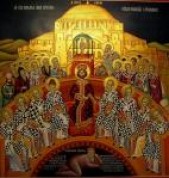 Christian Dogma
Christian Dogma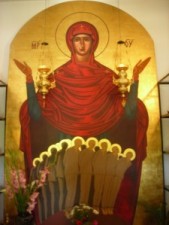 Christian Martyrs
Christian Martyrs Christian Orthodox Churches and Monasteries
Christian Orthodox Churches and Monasteries Christian Sermons and News
Christian Sermons and News Church's Teachings on Fasting
Church's Teachings on Fasting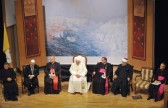 Ecumenism – a Great Heresy
Ecumenism – a Great Heresy Father George Calciu
Father George Calciu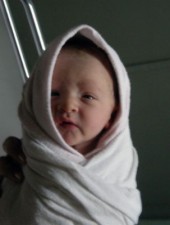 Life_a Sacred Gift form God
Life_a Sacred Gift form God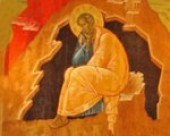 Orthodox Saints and Church Fathers
Orthodox Saints and Church Fathers Spiritual Elders
Spiritual Elders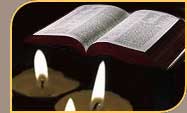 Daily Bible Readings
Daily Bible Readings Journey to Orthodoxy
Journey to Orthodoxy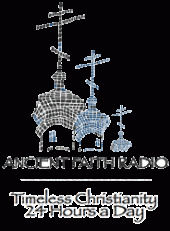 Listen to Ancient Faith Radio
Listen to Ancient Faith Radio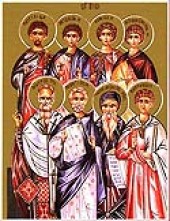 Orthodox Calendar of Feasts and Saints
Orthodox Calendar of Feasts and Saints Orthodox Christian Mission Center
Orthodox Christian Mission Center Orthodox Institute
Orthodox Institute OrthodoxChristianNetwork TV
OrthodoxChristianNetwork TV
3 comments
Comments feed for this article
March 19, 2013 at 2:15 PM
jmatthe
Christian TORRENTS & LINKS YOU MUST SEE!!!
see at the links below (update often).
Saint John The Russian-full documentary (English subtitles).
http://ireport.cnn.com/docs/DOC-939281
A Saint of our days-Elder Iakovos Tsalikis.(English subtitles).
http://ireport.cnn.com/docs/DOC-864668
Elder Paisios – An Orthodox Saint of our times.
http://ireport.cnn.com/docs/DOC-865254
Christian videos& books
http://kat.ph/christian-videos-books-t7113370.html
and
http://sumedang.org/anime-torrents/Christian-videos-books_455298701.html
INCREDIBLE Miracles of God!
http://thepiratebay.se/torrent/8109139/INCREDIBLE_Miracles_of_God_.avi
http://ireport.cnn.com/docs/DOC-940018
various
http://thepiratebay.se/user/aekarajonny/
The Island-(Ostrov).English Subtitles.
The miracle, Tο θαύμα (2009)
http://www.veoh.com/watch/v40902917yPd9SF3Z
Tsar – 2009(Eng subs).
http://www.veoh.com/watch/v40950171HmYDaPwy
Angel’s Aisle – Придел Ангела,(2008).
Ο Ιερέας 2009-(ΕΛΛΗΝΙΚΟΙ ΥΠΟΤΙΤΛΟΙ).
Pentecostals-Protestants Truth or sect?
http://ireport.cnn.com/docs/DOC-786432
Protestantism in search of Orthodoxy
BBC Panorama – Jehovah’s Witnesses documentary ‘Suffer the Little Children'(Greek Subtitles).
Jehovah’s Witnesses Pedophilia (Greek Subtitles)
http://ireport.cnn.com/docs/DOC-864671
ΜΑΡΤΥΡΕΣ ΤΟΥ ΙΕΧΩΒΑ ΚΑΙ ΨΕΥΔΟΠΡΟΦΗΤΕΙΕΣ.
ΘΑΥΜΑΤΑ ΤΗΣ ΠΑΝΑΓΙΑΣ ΚΑΙ ΑΓΙΩΝ.
ΚΑΘΟΛΙΚΟΣ Η ΟΡΘΟΔΟΞΟΣ;
ΜΑΡΤΥΡΕΣ ΤΟΥ ΙΕΧΩΒΑ-IΣΤΟΡΙΑ ΤΗΣ ΑΙΡΕΣΗΣ.
Πεντηκοστιανοί Προτεστάντες αίρεση και πλάνη!
ΕΡΩΤΗΣΕΙΣ ΠΡΟΣ ΤΟΥΣ ”ΜΑΡΤΥΡΕΣ ΤΟΥ ΙΕΧΩΒΑ”.
Πλανες των Μαρτυρων του Ιεχωβα!
Πλανες των Μαρτυρων του Ιεχωβα! NO2
seed,share,enjoy!
may God bless you all!
March 19, 2013 at 2:15 PM
jmatthe
Saint John The Russian-full documentary (English subtitles).
http://ireport.cnn.com/docs/DOC-939281
March 19, 2013 at 4:45 PM
orthodoxword
Thank you brother for sharing all these beautiful links with us!